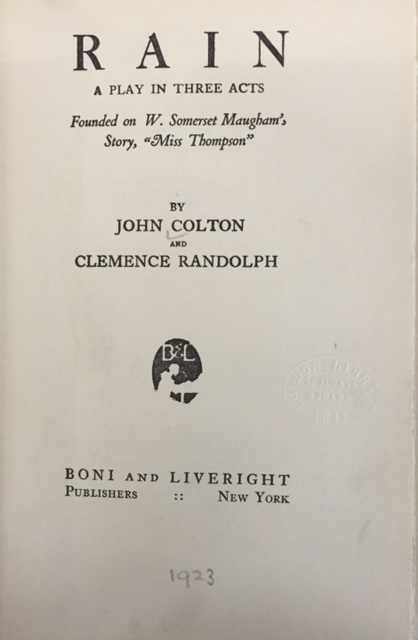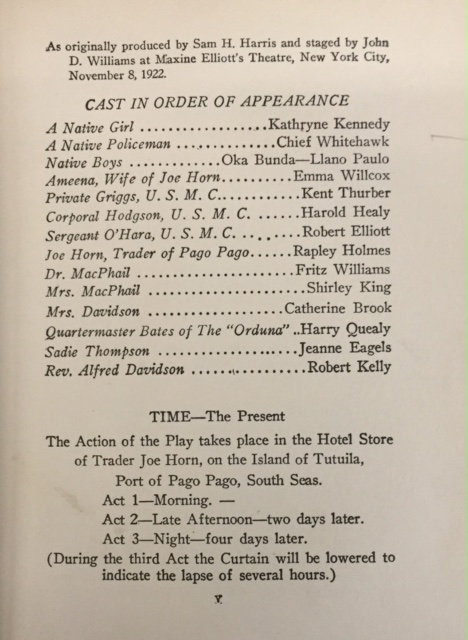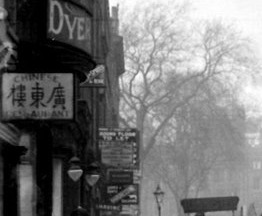Posted: November 16th, 2016 | No Comments »
Lo Feng-luh was China’s Minister to London in 1900 – I mentioned him in yesterday’s post on Sun Yat-sen. He spoke impeccable English and had previously been Li Hung-chang’s English secretary. some British and American journalists who interviewed Li were friendly with Lo and several recall him as the first Chinese official ever to shake hands rather than bow.
Anyway, when Minister to London Lo took a trip to Birmingham to visit the Mint there – they kindly struck a commemorative coin of his visit in January 1900.

Posted: November 15th, 2016 | 1 Comment »
It’s Dr Sun Yat-sen’s sesquicentennial this week and sometimes it seems just about everything that could be said about Sun Yat-sen has been. However, maybe a more forgotten story – which links to the fact that as well as being Sun’s 150th birthday this year it was also the centenary of the 1916 East Rising in Ireland. Here’s how those two events link….

In 1911 China proclaimed itself a Republic, ending 267-years of the Qing Dynasty. The movement to create the republic was led by Sun Yat-sen. In 1916 a group of Irish Republicans launched an armed insurrection against British rule, what became the Easter Rising, and to declare an Irish Republic. This commenced on 24 April 1916 with the declaration of independence. The British army quickly suppressed the Rising, and its leaders agreed to an unconditional surrender on Saturday 29 April. Most of those leaders were subsequently executed following courts-martial, but the Rising succeeded in bringing physical force republicanism back to the forefront of Irish politics. Support for republicanism continued to rise in Ireland.

What Sun Yat-sen, then in Canton heading the provisional government, thought of the Irish Easter Uprising is not clearly known. Ireland features little in his letters and writings. Yet, there were links. One of those links was Roland (Rowland) J. Mulkern, an Irish Nationalist. In 1896, while in exile in London, Sun had been effectively kidnapped, by the Chinese Imperial Secret Service. He was detained at the Chinese Embassy on Portland Place where it was believed the agents of the Qing Dynasty planned to kill him. Thanks to efforts from his friend Dr James Cantile (below – Sun’s former teacher at the Hong Kong College of Medicine for Chinese), the Times newspaper and the British Foreign Office, Sun was eventually released after twelve days in captivity. The press reports surrounding his detainment made him a celebrity in Britain.

Around this time Sun became friends with Mulkern, who expressed his sympathy for Sun’s plight and support for the cause of Chinese republicanism. A former professional soldier and member of Sun’s Restoration Party, Mulkern acted as Sun’s bodyguard occasionally for a time as Sun continued to live in London.
Mulkern was descended from Anglo-Irish aristocracy though was to become a strong advocate for Sun and the Restoration Party and to be described as Sun’s “Agent†in London. He served as Secretary of the Friends of China Society in London. Sun had been kidnapped in London in part because he had been thrown out of Hong Kong, a British Crown Colony, where the governor (and the Foreign Office in London) feared that the colony could become a base for revolutionary activities. Yet, after Sun’s kidnapping, the Foreign Office had sought to intervene to secure his release – should Sun not have received the same support in Hong Kong? Writing to the London Standard Newspaper Mulkern asked, after Sun’s release, “If Sun had rights as a political refugee in England, does he lose those rights in an English Crown Colony?â€
Mulkern’s letter led to questions in Parliament. Born in County Mayo during the Famine, Michael Davitt (below) was an Irish republican and founder of the Irish National Land League, a labour leader and a Home Rule politicians and MP for County Meath. Davitt had been a close ally of Parnell until the scandal around Parnell’s divorce led them to become bitter enemies. In Parliament Davitt asked for the specific reasons Sun had been banished from Hong Kong. The Colonial Office found it had no good cause and appeared confused by the events surrounding Sun’s removal from Hong Kong. They referred back to the Governor and then admitted that the evidence was flimsy for deportation, that he had not been convicted of any offense in the Colony and that the Colonial Office itself did not know whether or not the banishment order was still in force. Red faces all round.

The Chinese Embassy in London followed the events and the newly arrived minister, Lo Feng-lu (BTW: Kenneth Lo, who many in Britain will know for his cookery programmes was Minster Lo’s grandson), asked the government not to revoke the order. Davitt kept up the pressure but the Colonial Office appeared to be unable to get any more information from Hong Kong. In the end Chamberlain fudged the whole thing and Sun remained banished.

Still Mulkern and Davitt established a committee in London which would highlight the Chinese reform agenda and work to prevent any “unjust intervention†by Britain in the event of a republican uprising in China. Davitt and Mulkern communicated in a code calling Sun “John†and referring to Hong Kong as “Monaco†etc to avoid detection. Sun certainly regarded Davitt as an ally to the Chinese cause and Davitt indicated to Sun, in 1899, that he was considering a trip to both China and Japan (though never did eventually).
Mulkern remained close to Sun and was to surface in China later and be present at the Huizhou Uprising in October 1900. This uprising in Guangdong was a failure despite support from the local triads. Mulkern made it back to England, living at Clarendon Road in Holland Park, after the failed uprising. In 1904 he wrote to various newspapers, including The Straits Times in Singapore to protest Sun’s problems with entering San Francisco and the Chinese Exclusions Acts. He was described as an “honorary member†of Sun’s “Reform Partyâ€. It seems Mulkern did live long enough to see the Chinese Republic formed; he died in 1918 in London.
Posted: November 14th, 2016 | 1 Comment »
I recently wrote a round up of the London Chinese restaurant scene in the 1930s and wartime for The Cleaver Quarterly. I concentrated on the establishments in Soho, though with nods to those nearby on Shaftesbury Avenue, Piccadilly, Charing Cross Road and Denmark Street (not forgetting the few “refreshment rooms” left down in the old, and by then almost over, Chinatown of Limehouse). Space meant omitting a few places for various reasons – one of which was Chop Suey, down on the Strand at the corner with Buckingham Street (that runs down towards the Thames). Technically it was at no.28 Buckingham Street and was listed in the directories as the “Strand Chinese Restaurant”, though advertised itself as the Chop Suey.

Chop Suey cropped up the other day when I was reading the rather amazing 1937 crime book The Face on the Cutting Room Floor by Cameron McCabe (in reality Ernest Borneman). In the book the characters debate where to have dinner and consider the Chop Suey in Buckingham Street. However, one character hates Chinese food and so they head to “the Turkish place in Greek Street” (though could have gone to one of a couple of Chinese restaurants on that street too!). Given that the term Chop Suey is really usually associated in the UK with America many readers may consider that McCabe/Borneman simply invented the name – but he didn’t and obviously knew his London Chinese restaurants. The Chop Suey (sometimes known as the New Chop Suey) had opened around 1930…Here’s a review from a 1932 edition of the Australian Queenslander newspaper (21/7/32 to be precise)…

‘…the Chop Suey, at the corner of Buckingham Street, which is presided over by Mr. Y. Fugii. This Chop Suey is different from all the others, and is probably the only one of its kind in the world. It is unique, in that it is half Chinese and half Japanese. The ground floor is the Japanese department, and here is set a small gas ring upon every table, so that he who runs, or rather sits, may, if he wishes, be his own cook. I should perhaps at once explain that either the proprietor or one of the waitresses will not only show you how to do it, but will actually cook a meal under your very nose and upon the table at which you sit if you are entirely ignorant as to the proper procedure. The fact that all the food is brought to the table in the raw state precludes any possibility of its being other than fresh and good, while a visit to Mr. Fugii’s restaurant affords the novice a very good and free lesson in Chinese and Japanese cooking. Chop-sticks are provided, either of wood (enclosed with a small tooth pick and hygienically wrapped in paper), or of ivory, and the correct way of eating is to put some rice in your bowl and help yourself with the chop sticks from the pan, carrying the food from pan to bowl and there dipping it in the rice and sauce, or whatever you have. It is not correct to fill your bowl from the main dish, and the bowl, as hereafter explained, should be taken near the mouth and the food thrown in by means of the chop sticks. Chop Suey.’
Whether the place was any good or not is questionable – a supposed Chinese visitor writing in 1932 after dining at the Chop Suey commented, “The Chop Suey in Buckingham Street, off the Strand, owned by a Japanese, provides the Japanese dish called Skerki, as colourless a thing as the human palate has ever invented.” However, that diner wasn’t actually Chinese but, in reality, the author of the popular Kai Lung books Ernest Bramah (and used the pseudonym Peh Der Chen), who wrote a 1932 book entitled Honourable and Peculiar Ways that gave a quick round up of London’s Chinese eateries. If anyone has any idea what “skerki” was do let me know?

No.28 Buckingham Street was, I believe, totally destroyed by a German high explosive bomb during the Blitz sometime between October 1940 and June 1941. That area, close to the prime target of Charing Cross railway station, was then left vacant and not redeveloped until later. It is now a modern pub and large block (containing a branch of NatWest Bank at ground level) fronting on to The Strand – here is site of No.28 and the Chop Suey looking up Buckingham Street towards the Strand at the junction with York Place….it is not overly attractive I’m afraid…After that the bomb damage maps for the Strand that show the havoc the Nazi Luftwaffe dropped on London – while the junction of Buckingham Street and Strand shows no damage close by on either side are purple squares indicating “damaged beyond repair”. And finally the Post Office Directory for 1943 (as above) yet now with No.28 gone completely never to return!



Posted: November 13th, 2016 | No Comments »
Following on from yesterday’s post on the John Colton/Clemence Randolph stage adaptation of Somerset Maugham’s Rain I thought we should see a few pictures of the production. Broadway producers were apparently nervous – perhaps unsurprising given the short story and the play’s content – prostitution and the attempted seduction of a religious man. Still, Jeanne Eagels took the role and the play opened in November 1922 at the 900-seat Maxine Elliott Theatre on West 39th Street…

 Jeanne Eagels as Sadie Thompson
Jeanne Eagels as Sadie Thompson

Posted: November 12th, 2016 | 1 Comment »
I’ve blogged before about W. Somerset Maugham’s great Far East-set tale of prostitution, temptation and redemption, Miss (Sadie) Thompson – otherwise known as Rain, written in 1921. I had known that there was a Broadway adaptation of the short story by John Colton, who later in 1926 wrote the original stage play The Shanghai Gesture (of course filmed much later in 1941 by Josef von Sternberg).
Anyway, I came across a copy of the stage play version by Colton and Clemence Randolph the other day from 1923 (the play version first being staged in 1922)….
BTW: as you can see the play was first staged at the Maxine Elliot Theatre (note that the word ‘theatre’ was spelled correctly by Americans in the 1920s) in New York. I was not familiar with Maxine Elliot until a couple of weeks ago I read Mary S. Lovell’s new book The Riviera Set, the first half of which is bascially all about her wonderful life in America, London and the south of France.



Posted: November 11th, 2016 | 2 Comments »
This picture popped up the other day on the Flashbak site. It’s Greek Street in London’s Soho in 1932. For China Rhyming readers the interesting bit is the sign of the left hand side that says Chinese Restaurant (no.51). This was the Canton Restaurant run by a Mr Wong Gee. It’s particularly interesting because the Canton was not a long lived restaurant, indeed it was out of business the following year and had only been in business a year or so – hence, there are few remembrances or photographs of the place compared to the far more famous and long-lived Shanghai Restaurant at the other end of the street by the junction with Manette Street.
However, because Mr Wong Gee was an interesting character it does get a nod in my recent article on London’s Chinese restaurant scene of the 1930s and war for The Cleaver Quarterly (an excellent magazine and well worth buying!!). We have one description of the place – the ground floor windows, “full of Chinese delicacies.†Due to debts on another restaurant on Charing Cross Road round the corner, the much larger Canton Café and Restaurant, he eventually left London and settled in Edinburgh (for the rest of his life) where he opened a Chinese-style cafe on Chambers Street and became a British citizen in 1950.


Posted: November 10th, 2016 | No Comments »
So this is Gloria Sutter of Shanghai in the summer of 1937, her picture taken shortly before the bomb attacks on the city that August 14th. I’m afraid I have not been able to track her down at all. I don’t know where she was from, how she got to Shanghai, what she was doing there or what happened to her later. There’s just this portrait of her in a bathing suit, applying lipstick and posing.

Posted: November 9th, 2016 | No Comments »
Just published and perhaps of interest to China Rhyming readers….John Stubbs and Robert Thomson’s Architectural Conservation in Asia: National Experiences and Practice…

At a time when organized heritage protection in Asia is developing at a rapid pace, Architectural Conservation in Asia provides the first comprehensive overview of architectural conservation practice from Afghanistan to the Philippines. The country-by-country analysis adopted by the book draws out local insights, experiences, best practice and solutions for effective cultural heritage management that will inform study and practice both in Asia and beyond.
Whereas architectural conservation in much of the Western world has been extensively documented, this book brings together coverage of many regions where architectural conservation has been understudied. Following on from the highly influential companion volumes on global architectural conservation and architectural conservation in Europe and the Americas, with this book the authors extend their pioneering global examination to the dynamic and evolving field of architectural conservation in Asia.
Throughout the book, the authors and regional experts provide local case studies and profile topics that bring depth and insight to this ambitious study. As architectural conservation becomes increasingly global in practice, this book will be of considerable assistance to architectural conservation practitioners, site managers and students of architecture, planning, archaeology and heritage studies worldwide.
Â





















